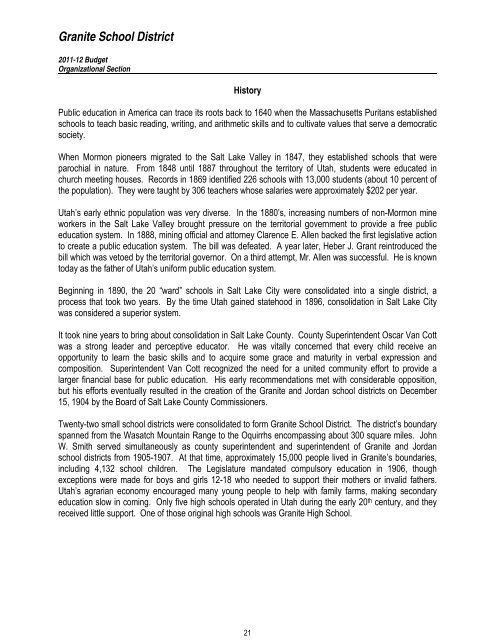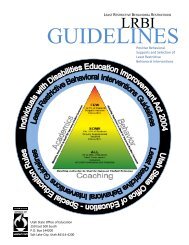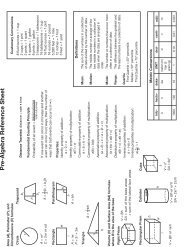2011T12 ANNUAL BUDGET - Granite School District
2011T12 ANNUAL BUDGET - Granite School District
2011T12 ANNUAL BUDGET - Granite School District
Create successful ePaper yourself
Turn your PDF publications into a flip-book with our unique Google optimized e-Paper software.
<strong>Granite</strong> <strong>School</strong> <strong>District</strong><br />
2011-12 Budget<br />
Organizational Section<br />
History<br />
Public education in America can trace its roots back to 1640 when the Massachusetts Puritans established<br />
schools to teach basic reading, writing, and arithmetic skills and to cultivate values that serve a democratic<br />
society.<br />
When Mormon pioneers migrated to the Salt Lake Valley in 1847, they established schools that were<br />
parochial in nature. From 1848 until 1887 throughout the territory of Utah, students were educated in<br />
church meeting houses. Records in 1869 identified 226 schools with 13,000 students (about 10 percent of<br />
the population). They were taught by 306 teachers whose salaries were approximately $202 per year.<br />
Utah’s early ethnic population was very diverse. In the 1880’s, increasing numbers of non-Mormon mine<br />
workers in the Salt Lake Valley brought pressure on the territorial government to provide a free public<br />
education system. In 1888, mining official and attorney Clarence E. Allen backed the first legislative action<br />
to create a public education system. The bill was defeated. A year later, Heber J. Grant reintroduced the<br />
bill which was vetoed by the territorial governor. On a third attempt, Mr. Allen was successful. He is known<br />
today as the father of Utah’s uniform public education system.<br />
Beginning in 1890, the 20 “ward” schools in Salt Lake City were consolidated into a single district, a<br />
process that took two years. By the time Utah gained statehood in 1896, consolidation in Salt Lake City<br />
was considered a superior system.<br />
It took nine years to bring about consolidation in Salt Lake County. County Superintendent Oscar Van Cott<br />
was a strong leader and perceptive educator. He was vitally concerned that every child receive an<br />
opportunity to learn the basic skills and to acquire some grace and maturity in verbal expression and<br />
composition. Superintendent Van Cott recognized the need for a united community effort to provide a<br />
larger financial base for public education. His early recommendations met with considerable opposition,<br />
but his efforts eventually resulted in the creation of the <strong>Granite</strong> and Jordan school districts on December<br />
15, 1904 by the Board of Salt Lake County Commissioners.<br />
Twenty-two small school districts were consolidated to form <strong>Granite</strong> <strong>School</strong> <strong>District</strong>. The district’s boundary<br />
spanned from the Wasatch Mountain Range to the Oquirrhs encompassing about 300 square miles. John<br />
W. Smith served simultaneously as county superintendent and superintendent of <strong>Granite</strong> and Jordan<br />
school districts from 1905-1907. At that time, approximately 15,000 people lived in <strong>Granite</strong>’s boundaries,<br />
including 4,132 school children. The Legislature mandated compulsory education in 1906, though<br />
exceptions were made for boys and girls 12-18 who needed to support their mothers or invalid fathers.<br />
Utah’s agrarian economy encouraged many young people to help with family farms, making secondary<br />
education slow in coming. Only five high schools operated in Utah during the early 20 th century, and they<br />
received little support. One of those original high schools was <strong>Granite</strong> High <strong>School</strong>.<br />
21

















